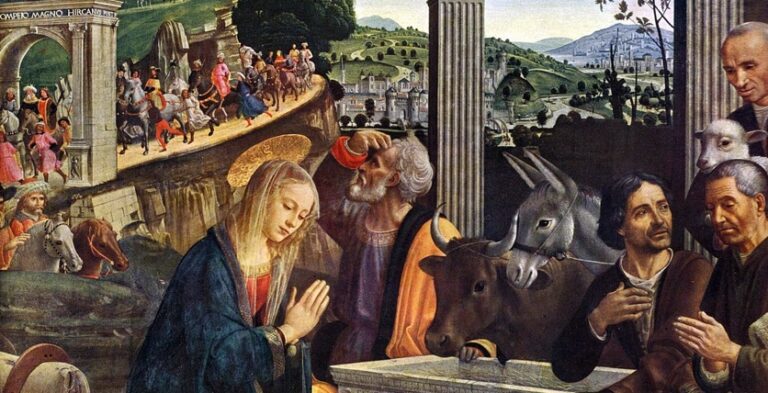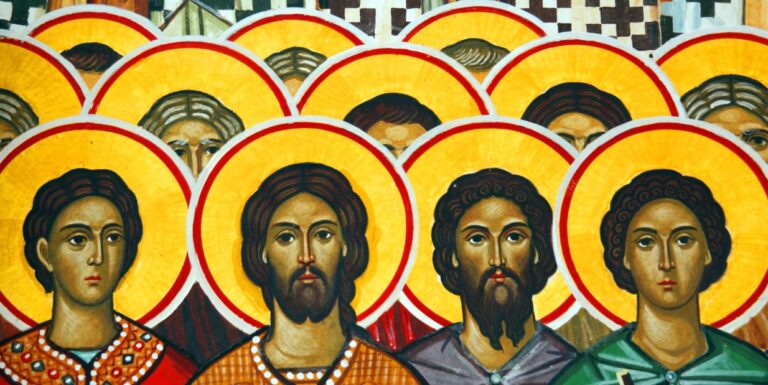
“JESUS TOOK WITH HIM PETER AND JOHN AND JAMES, AND WENT UP ON THE MOUNTAIN TO PRAY…”

Probably, most Catholics do not link Jesus’ Transfiguration on the mountain with the Exodus of the Old Testament. For us, it is a stand-alone, unique event which reveals Jesus as the Son of God.
The Transfiguration surely is that (and more as well), but several allusions to the Exodus in St. Luke’s Gospel account make clear that the evangelist saw the Transfiguration as fulfilling the Exodus of old on a deeper level.
The presence of Moses, along with Elijah, at Jesus’ side is the most obvious hint that the Transfiguration represents a new Exodus. Likewise, the epiphany on a cloud-covered mountaintop after which Jesus’ clothes were “dazzling white” recalls Moses’ encounters with the Lord on Sinai. (Ex 24.15-18; 34.29-35) “When Aaron and all the Israelites saw Moses, the skin on his face was shining, and they were afraid to come near him.”
As well, Luke speaks of Jesus’ “departure” which will soon occur in Jerusalem. The Greek word translated as departure is “exodos.”
The similarity of Jesus’ physical transformation to that of Moses leads Peter to call for three tents to be erected on the mountain, one each for Jesus, Moses and Elijah. Peter has put the three on the same level, so the Father responds from the cloud, “This is my Son, my Chosen; listen to him.” When the divine cloud disperses, only Jesus remains.
Something new is happening, a new liberation through which God’s people will receive a deeper freedom. Luke surrounds his account of the Transfiguration with Jesus’ predictions of his passion, death and resurrection. Those who want to share in this new Exodus are called to share in this paschal mystery: “If any want to become my followers, let them deny themselves and take up their cross daily and follow me.” (Lk 9.23)
Few today would connect the idea of carrying one’s cross with liberation. In our society, we most often link liberation with freedom from bonds of responsibility, to revel, for example, in “Freedom 55.” Ours is a materialistic culture where we seek a material freedom rather than the spiritual freedom Jesus offers.
Yet, we ought not draw the line between the material and the spiritual sharply. Jesus’ ministry in Luke’s Gospel needs to be viewed through the lens of his mission statement announced in the Nazareth synagogue. (4.18-19) There, Jesus made his own Isaiah’s prophecy that the Spirit of the Lord anointed him to bring good news to the poor, release to captives, sight to the blind and freedom to the oppressed. He will proclaim “the year of the Lord’s favour.” Eternal liberation involves participating in Jesus’ mission to bring new life to the marginalized and downtrodden.
Jesus’ Transfiguration is a unique event, one which finds its fullest meaning when understood in light of its resonances with the Old Testament. The Transfiguration is part of a new Exodus, a challenging path which we can walk with Jesus who is depicted here as the fullness of God’s revelation.


